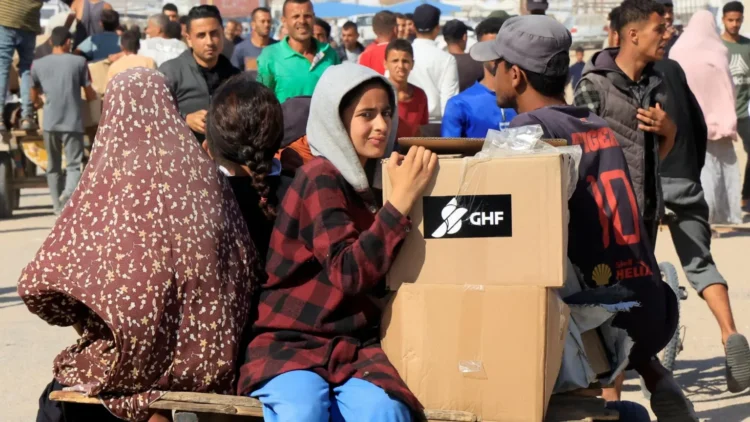Thousands of desperate Palestinians stormed a controversial US- and Israeli-backed aid distribution centre in Rafah, southern Gaza, just one day after it opened. The facility, operated by the Gaza Humanitarian Foundation (GHF), quickly descended into chaos as fences were toppled and security barriers overrun by crowds seeking food.
Footage from the scene shows masses of civilians trampling over berms and barriers in a desperate bid to access dwindling aid supplies. At one point, GHF staff were forced to retreat due to the overwhelming surge. Nearby Israeli troops reportedly fired warning shots to control the situation.
The GHF, staffed by armed American contractors, was established to circumvent the United Nations’ aid delivery system, which Israel accuses of failing to prevent Hamas from diverting supplies—an allegation Hamas denies. The group claims its goal is to provide direct assistance, yet its presence has sparked fierce criticism from humanitarian agencies.
UN officials described the scenes as “heartbreaking” and reaffirmed that they have a comprehensive plan to deliver aid fairly and safely to Gaza’s 2.1 million people. They, along with major NGOs, have refused to collaborate with GHF, warning its approach undermines humanitarian principles, risks civilian lives, and sets a dangerous global precedent by politicising aid.
Critics say the system marginalises vulnerable populations, risks forced displacement, and turns basic relief into a tool of coercion in an already volatile conflict zone.
As Gaza reels from an 11-week blockade that has only recently been partially lifted, experts warn of a rapidly worsening humanitarian catastrophe. For many, the scramble for aid in Rafah is not just a cry for food—it’s a symbol of the broader breakdown of international relief efforts in one of the world’s most urgent crises.










